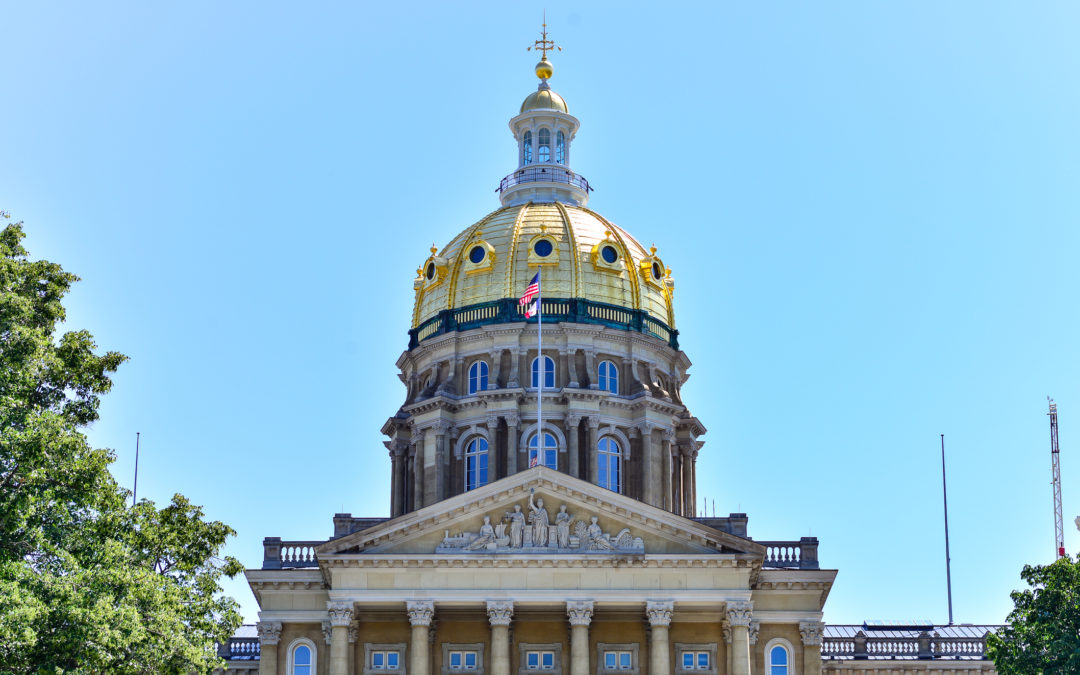Like most of the country, Iowa is facing two problems. First, the coronavirus is threatening the lives of its residents. Second, the response to the virus, in terms of lockdowns and social distancing, has been a threat to the state’s economy. The balancing act is figuring out how to keep the virus in check without destroying people’s livelihoods. Fortunately, part of the answer is hiding in plain sight.
This quandary explains why last June, Governor Kim Reynolds signed an executive order establishing an Economic Recovery Advisory Board. Its purpose is to coordinate the state’s response to the pandemic, identify opportunities to spur economic growth, and do so in a way that doesn’t leave behind vulnerable Iowans.
So far, the board has made some good recommendations. One suggestion is that the state do more to promote telehealth services that connect doctors and patients remotely; another is to find ways to increase the supply of housing, making it more affordable. However, noticeably absent from the board’s list of recommendations is regulatory reform.
Red tape is a known drag on economic growth, and Iowa has more than its fair share. As of this year, the state has 161,000 regulatory restrictions in its administrative rules, as measured by instances of terms like “shall,” “must” and “required.” To put that in context, the average U.S. state has about 135,000 of these terms, and the least regulated state—Idaho—has just 39,000.
The accumulation of all these regulations comes with a real cost. One restriction may be insignificant, and in some cases might even spur some growth, but 100,000 is like throwing a wet blanket over the economy. Many of these regulations are anticompetitive, locking out new businesses (which can’t bear the costs as easily as established businesses) and by extension new jobs.
Regulatory reform can change that, and it has some advantages over traditional recession–fighting tools. Unlike massive spending or tax cuts, it won’t blow a hole in the state budget. In fact, eliminating burdensome regulations is likely to boost the economy and raise revenue simultaneously.
It’s long overdue. Rules in Iowa are supposed to be reviewed every five years, but that process lacks teeth. Agencies just have to issue a report summarizing the results of their reviews—there’s no requirement for rules to go away if they’ve outlived their usefulness.
Contrast this with states like North Carolina or Idaho. North Carolina has a 10-year review process, but the state also sets a schedule of expiration dates for rules so that they cease to exist unless reauthorized. In Idaho, rules have to be repealed on a five-year staggered basis. If the regulating agency wants to keep its rule, it has to refile a new one.
Process reforms like these could be a game-changer, and could also help the governor and the economic recovery board achieve some of their other goals. One of the main barriers standing in the way of telehealth services are regulations that historically have given preference to in-person services over digital consultations. Idaho, on the other hand, allows pharmacists to supervise pharmacies remotely, via video conferencing platforms. This has reduced costs and is leading pharmacies to open in remote parts of the state that in some cases haven’t had a pharmacy in decades.
There is a similar story for housing, as local development and zoning regulations tend to favor relatively expensive suburban-style housing and often discourage the building of affordable new homes. Rolling back or capping regulations encourages more supply, thereby bringing down rents at a time when people are struggling to pay the bills.
Fighting the pandemic and supporting an economic recovery are two birds that can be killed with the same stone. Regulatory reform is that stone, and other states have created a roadmap for how to succeed in this area. The question now is whether Iowa will follow their lead.
James Broughel is a senior research fellow at the Mercatus Center at George Mason University and an adjunct professor of law at the Antonin Scalia Law School. He specializes in state and federal regulatory procedures, cost-benefit analysis, and economic growth.

James Broughel – Photo Courtesy the Mercatus Center at George Mason University



